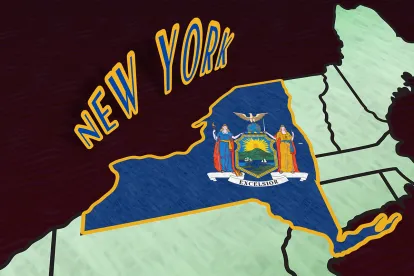Statutes of limitation were “tolled” in New York by Executive Order No. 202.8, issued by Governor Andrew M. Cuomo on March 20, 2020 in response to the COVID-19 pandemic. Over the next six-and-a-half months, that toll was renewed by further executive order every 30 days until, on October 4, 2020, the Governor issued Executive Order No. 202.67, announcing that the tolling order would be extended for only one more 30-day period—“until November 3, 2020, and after such date [statutes of limitation] will no longer be tolled.”
On November 3, 2020, the Governor issued Executive Order No. 202.72, confirming that the tolling period would no longer be in effect beginning November 4, 2020:
Pursuant to Executive Order 202.67, the suspension for civil cases in Executive Order 202.8, as modified and extended in subsequent Executive Orders, that tolled any specific time limit for the commencement, filing, or service of any legal action, notice, motion, or other process or proceeding as prescribed by the procedural laws of the state, including but not limited to the family court act, the civil practice law and rules, the court of claims act, the surrogate’s court procedure act, and the uniform court acts, or by any statute, local law, ordinance, order, rule, or regulation, or part thereof, is hereby no longer in effect as of November 4, 2020, provided any criminal procedure law suspension remains in effect and provided that all suspensions of the Family Court Act remain in effect until November 18, 2020 and thereafter continue to remain in effect for those juvenile delinquency matters not involving a detained youth and for those child neglect proceedings not involving foster care.
EO 202.72 (emphasis added).
Though the Governor’s tolling period has ended, its legal effect was the subject of heated debate throughout 2020. Some commentators grappled with whether the Governor ever had the authority under the Executive Law to toll statutes of limitation promulgated by the Legislature.[1] Others questioned whether, even if the Governor has such authority, the tolling period functioned as a true tolling of the statute of limitation or as a grace period, merely extending plaintiffs’ time to commence their actions until the executive order went out of effect, but not further.[2]
By way of illustration of the latter question, if a claim had three months remaining on its statute of limitation on March 19, 2020 (the eve of the tolling order), when would the statute of limitation run? If the Governor’s executive orders truly tolled the statute of limitation, then it did not run until February 2021—three months after the November 4, 2020 expiration of the executive orders. If, however, the tolling period was merely a grace period that extended plaintiffs’ time to commence their actions, then the statute of limitations ran in June 2020 and the grace period ended on November 3, 2020.
These issues have now reached the courts. For example, in Foy v. State of New York, 2021 N.Y. Misc. LEXIS 676, *7, 2021 NY Slip Op 21037, 4, 2021 WL 713696 (Ct. Cl. Feb. 16, 2021), the Court of Claims determined that the Governor’s executive orders were indeed meant to effect a true tolling of statutes of limitation, not merely a suspension of filing deadlines, and that “the tolls were authorized” by the Executive Law. Likewise, in Morse v. LoveLive TV US, Inc., 2020 N.Y. Misc. LEXIS 10449, *18-19, 2020 NY Slip Op 51481(U), 7, 69 Misc. 3d 1224(A), 135 N.Y.S.3d 629 (Sup. Ct., N.Y. Cty. Dec. 15, 2020), the court considered a motion to dismiss based on plaintiff’s alleged failure to timely file suit during the COVID-19 pandemic. The court summarized both approaches to the Governor’s tolling orders (discussed above) and concluded that the action was timely commenced under either interpretation.
Undoubtedly, the legal effect of Governor Cuomo’s tolling orders will continue to be both debated and litigated for some time to come. Many plaintiffs will likely take the position that those orders tacked on an additional seven-and-a-half months to the statutes of limitation for their claims. Defendants looking to dismiss claims as untimely will likely argue that the executive orders had no impact on the limitations periods and only gave plaintiffs a grace period on filing—a grace period that ended in November 2020.
Litigants should continue to be aware of these competing approaches. In the meantime, the Sheppard Mullin team continues to monitor New York court decisions for further guidance on the legal impact on the executive orders.
As you are aware, things are changing quickly and there is no clear-cut authority or bright line rules. This is not an unequivocal statement of the law, but instead represents our best interpretation of where things currently stand. This article does not address the potential impacts of the numerous other local, state and federal orders that have been issued in response to the Covid-19 pandemic.
FOOTNOTES
[1] See, e.g., Souren A. Israelyan, The Governor Had Authority To Toll The Statute of Limitations, N.Y.L.J., Oct. 19, 2020.
[2] See, e.g., Patrick M. Connors, The COVID-19 Toll Has Ended, Long Live the COVID-19 Toll!, N.Y.L.J., Nov. 20, 2020; Hon. Thomas F. Whelan, Executive Orders: A Suspension, Not a Toll of the SOL, N.Y.L.J., Oct. 6, 2020.


 />i
/>i

